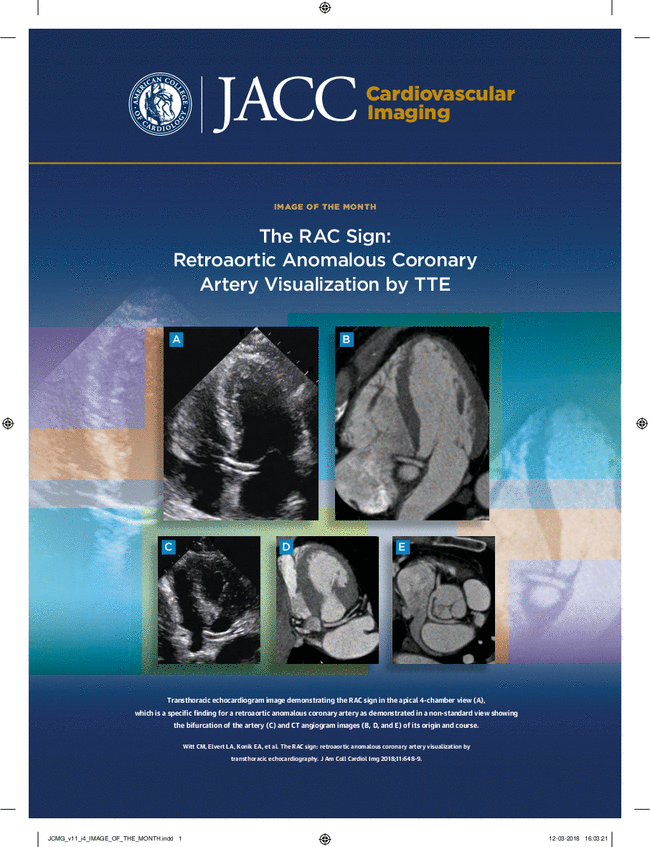Polygenic Risk Is Associated With Long-Term Coronary Plaque Progression and High-Risk Plaque
IF 12.8
1区 医学
Q1 CARDIAC & CARDIOVASCULAR SYSTEMS
引用次数: 0
Abstract
Background
The longitudinal relation between coronary artery disease (CAD) polygenic risk score (PRS) and long-term plaque progression and high-risk plaque (HRP) features is unknown.
Objectives
The goal of this study was to investigate the impact of CAD PRS on long-term coronary plaque progression and HRP.
Methods
Patients underwent CAD PRS measurement and prospective serial coronary computed tomography angiography (CTA) imaging. Coronary CTA scans were analyzed with a previously validated artificial intelligence–based algorithm (atherosclerosis imaging–quantitative computed tomography imaging). The relationship between CAD PRS and change in percent atheroma volume (PAV), percent noncalcified plaque progression, and HRP prevalence was investigated in linear mixed-effect models adjusted for baseline plaque volume and conventional risk factors.
Results
A total of 288 subjects (mean age 58 ± 7 years; 60% male) were included in this study with a median scan interval of 10.2 years. At baseline, patients with a high CAD PRS had a more than 5-fold higher PAV than those with a low CAD PRS (10.4% vs 1.9%; P < 0.001). Per 10 years of follow-up, a 1 SD increase in CAD PRS was associated with a 0.69% increase in PAV progression in the multivariable adjusted model. CAD PRS provided additional discriminatory benefit for above-median noncalcified plaque progression during follow-up when added to a model with conventional risk factors (AUC: 0.73 vs 0.69; P = 0.039). Patients with high CAD PRS had an OR of 2.85 (95% CI: 1.14-7.14; P = 0.026) and 6.16 (95% CI: 2.55-14.91; P < 0.001) for having HRP at baseline and follow-up compared with those with low CAD PRS.
Conclusions
Polygenic risk is strongly associated with future long-term plaque progression and HRP in patients suspected of having CAD.
多基因风险与冠状动脉斑块的长期进展和高风险斑块有关。
背景:冠状动脉疾病(CAD)多基因风险评分(PRS)与长期斑块进展和高危斑块(HRP)特征之间的纵向关系尚不清楚:本研究旨在探讨冠状动脉疾病多基因风险评分(CAD PRS)对冠状动脉斑块长期进展和高危斑块特征的影响:患者接受了 CAD PRS 测量和前瞻性连续冠状动脉计算机断层扫描(CTA)成像。冠状动脉计算机断层扫描(CTA)扫描结果通过先前验证的人工智能算法(动脉粥样硬化成像-定量计算机断层扫描成像)进行分析。通过线性混合效应模型研究了CAD PRS与动脉粥样斑块体积百分比(PAV)变化、非钙化斑块进展百分比和HRP患病率之间的关系,并对基线斑块体积和常规风险因素进行了调整:本研究共纳入了 288 名受试者(平均年龄 58 ± 7 岁;60% 为男性),扫描间隔中位数为 10.2 年。基线时,高 CAD PRS 患者的 PAV 比低 CAD PRS 患者高 5 倍多(10.4% 对 1.9%;P < 0.001)。在多变量调整模型中,每随访 10 年,CAD PRS 每增加 1 SD,PAV 进展就会增加 0.69%。如果将 CAD PRS 加入到常规风险因素模型中(AUC:0.73 vs 0.69;P = 0.039),CAD PRS 对随访期间高于中位数的非钙化斑块进展具有额外的判别优势。与CAD PRS低的患者相比,CAD PRS高的患者在基线和随访期间出现HRP的OR值分别为2.85(95% CI:1.14-7.14;P = 0.026)和6.16(95% CI:2.55-14.91;P < 0.001):多基因风险与疑似 CAD 患者未来长期斑块进展和 HRP 密切相关。
本文章由计算机程序翻译,如有差异,请以英文原文为准。
求助全文
约1分钟内获得全文
求助全文
来源期刊

JACC. Cardiovascular imaging
CARDIAC & CARDIOVASCULAR SYSTEMS-RADIOLOGY, NUCLEAR MEDICINE & MEDICAL IMAGING
CiteScore
24.90
自引率
5.70%
发文量
330
审稿时长
4-8 weeks
期刊介绍:
JACC: Cardiovascular Imaging, part of the prestigious Journal of the American College of Cardiology (JACC) family, offers readers a comprehensive perspective on all aspects of cardiovascular imaging. This specialist journal covers original clinical research on both non-invasive and invasive imaging techniques, including echocardiography, CT, CMR, nuclear, optical imaging, and cine-angiography.
JACC. Cardiovascular imaging highlights advances in basic science and molecular imaging that are expected to significantly impact clinical practice in the next decade. This influence encompasses improvements in diagnostic performance, enhanced understanding of the pathogenetic basis of diseases, and advancements in therapy.
In addition to cutting-edge research,the content of JACC: Cardiovascular Imaging emphasizes practical aspects for the practicing cardiologist, including advocacy and practice management.The journal also features state-of-the-art reviews, ensuring a well-rounded and insightful resource for professionals in the field of cardiovascular imaging.
 求助内容:
求助内容: 应助结果提醒方式:
应助结果提醒方式:


